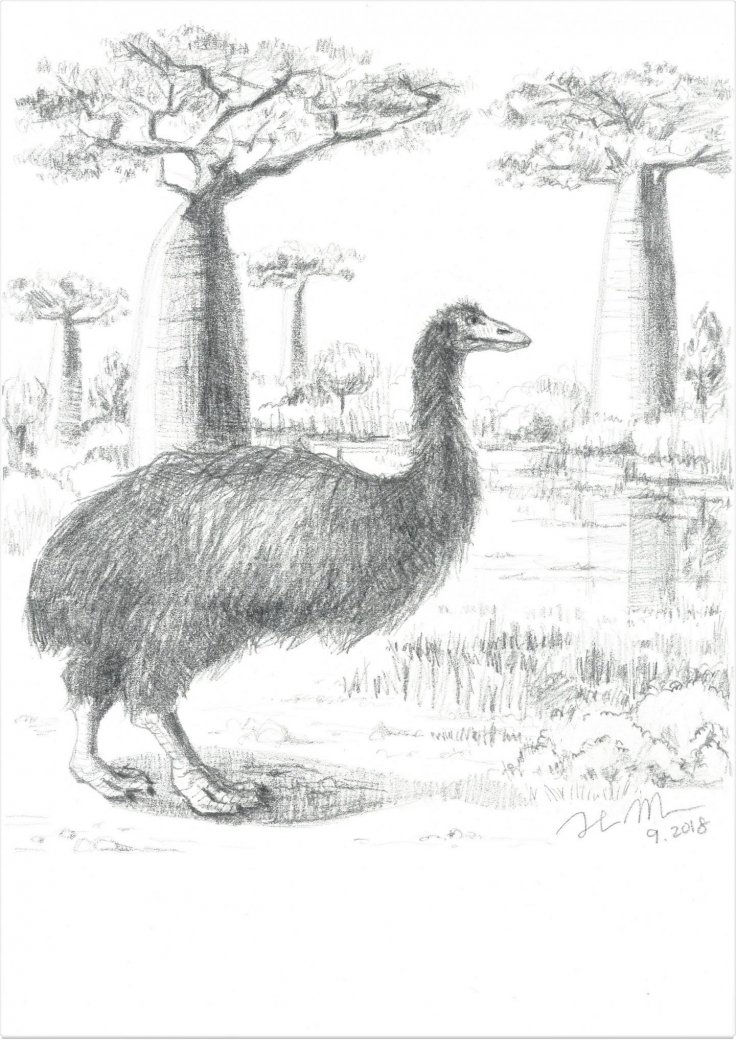
A group of British researchers have finally ended the century-old debate about the identity of the largest ever bird in the history of animal existence. On Wednesday, Scientists at international conservation charity ZSL's (Zoological Society of London) Institute of Zoology, have stated that a distant relative of New Zealand's kiwi, called as Vorombe titan has taken the title.
The name of the bird means, 'big bird' in Malagasy and Greek. As per the study, published in the Royal Society Open Science, the giant bird was weighing up to 1,800 pounds and growing to nearly 10 feet tall. The researchers also added that now extinct this bird once roamed the African island of Madagascar.
The study's lead author, James Hansford, from the Zoological Society of London has stated that Vorombe titan belonged to a group known as known as 'elephant birds' that once roamed the African island of Madagascar around 500,000 to 1 million years ago.
Dr Hansford analysed hundreds of elephant bird bones from several world museums to solve a 150-year-old taxonomic knot. He told Newsweek that the elephant birds are a "radiation of extinct, giant, flightless birds unique to the island of Madagascar. They are part of a group of birds which are called ratites, which include ostriches, emu, rhea, cassowaries and kiwi. Remarkably, it is the kiwi that are the closest living relatives to elephant birds today."

Before the revelation of Vorombe titan a world's largest bird, there were thought to be only up to 15 different species of the Madagascan creatures, under two genera.
"For over 80 years, there has been serious confusion over the number of elephant bird species due to exceptionally competitive scientists throughout the 19th and early 20th centuries," said Hansford.
"This is the first rigorous study of elephant birds in over 80 years and the first to incorporate the global collections of their skeletal remains in a quantitative framework, allowing the interpretation of their diversity," he continued.
"I found four distinctly different elephant bird taxa, which represent three genera and four species (Mulleornis modestus, Aepyornis hildebrandti, Aepyornis maximus and Vorombe titan)," Hansford added.
While considering previous studies, Aepyornis maximus, has often been considered to be the world's largest bird. Later, a British scientist C.W. Andrews focused on a larger species in 1894, called as Aepyornis titan. But, that species has usually been dismissed as an unusually large specimen of A. maximus.
Now, this newly published study has claimed that Andrew's 'titan' bird was indeed a distinct species and since the shape and size of its bone are very different from other elephant birds, ZSL has given it a new genus name, Vorombe. So, after the complition of the recent study, the title of the world's largest-ever bird has given to Vorombe titan.
In addition, Hansford said that the elephant birds were not only the biggest of Madagascar's megafauna but also "one of the most important in the islands evolutionary history—even more so than lemurs. This is because large-bodied animals have an enormous impact on the wider ecosystem they live in via controlling vegetation through eating plants, spreading biomass and dispersing seeds through defecation. Madagascar is still suffering the effects of the extinction of these birds today."

The co-author of this revolutionary study, Professor Samuel Turvey from ZSL's Institute of Zoology also stated that without the proper understanding about the diversity of previous species, "we can't properly understand evolution or ecology in unique island systems such as Madagascar or reconstruct exactly what's been lost since human arrival on these islands. Knowing the history of biodiversity loss is essential to determine how to conserve today's threatened species."
Hansford believes that their findings will inspire further research and will form the modern understanding of these birds to trigger more studies related to their evolutionary history and lives. As per the lead researcher, it's incredible that "we know less about the world's largest-ever birds that were walking around just 1,000 years ago than we do many dinosaurs that have been extinct for millions of years!"









